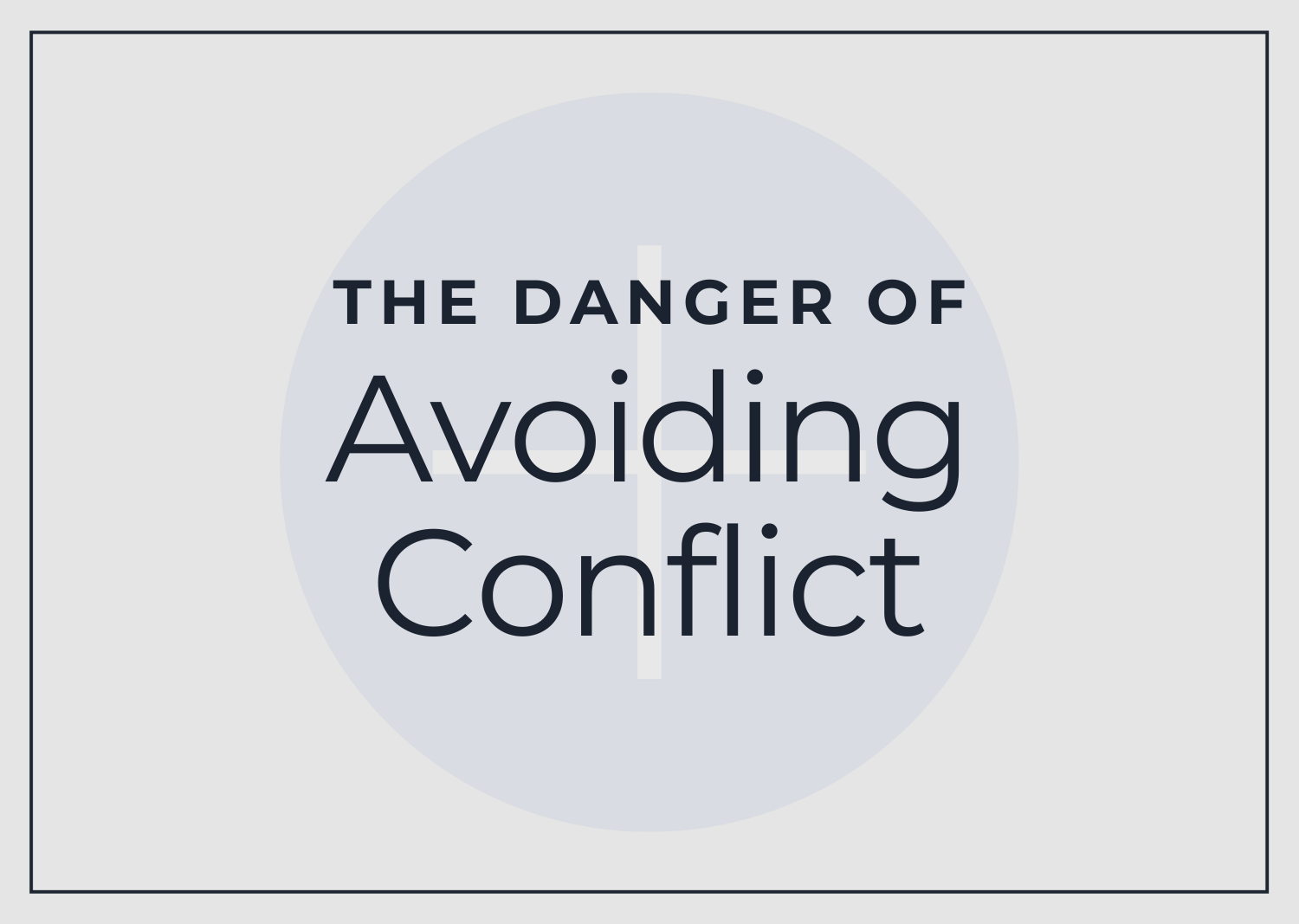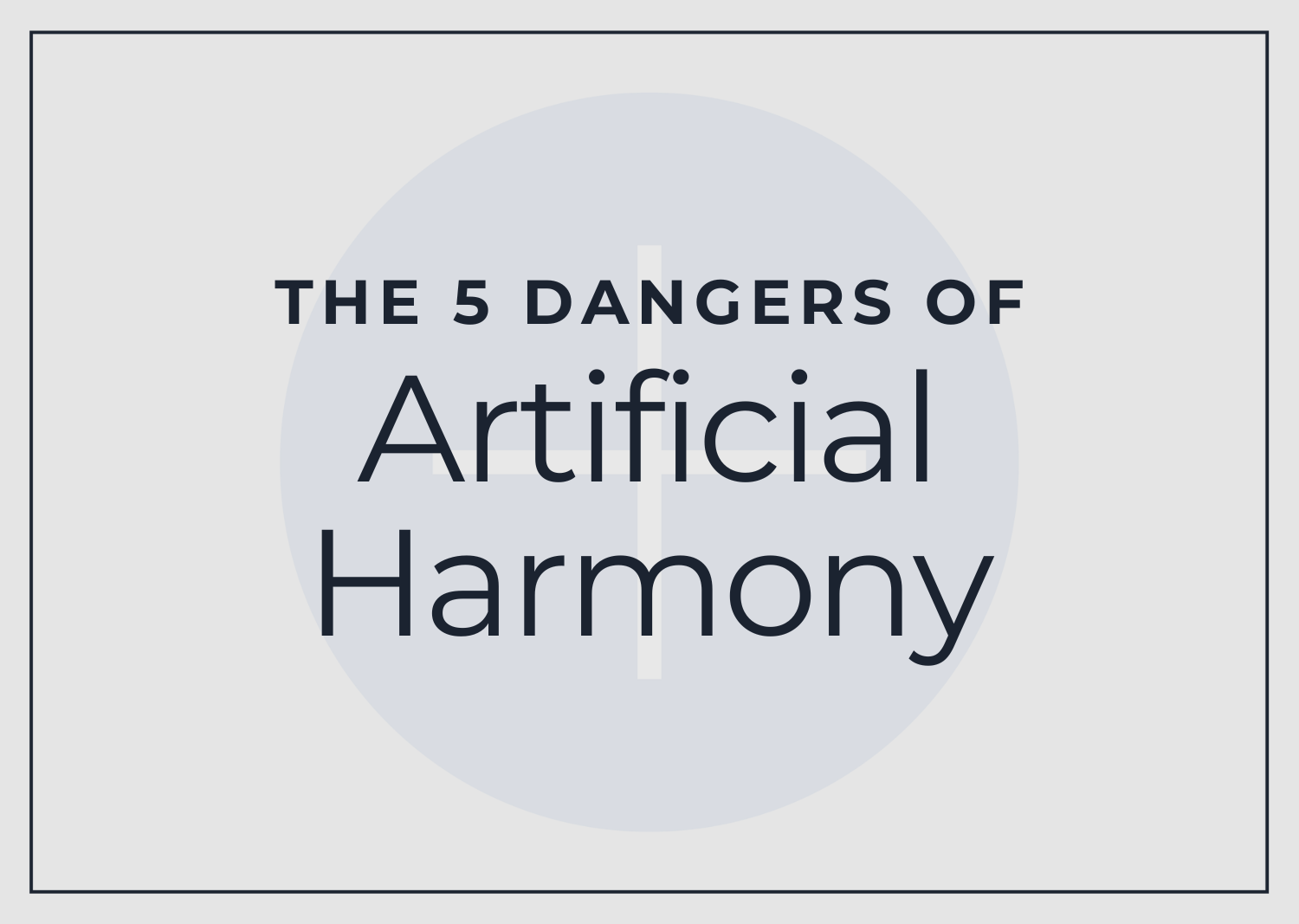5 Dangers of Artificial Harmony
"Contrary to popular wisdom and behavior, conflict is not a bad thing for a team. In fact, the fear of conflict is almost always a sign of problems." Patrick Lencioni
This article was originally written and published by David Hoyt, and inspired by teams that trust us to consult them on Organizational Health material from Patrick Lencioni’s best-selling books, The Advantage and The Five Dysfunctions of a Team.
Remember the Conflict Continuum?

While we all know mean-spirited personal attacks are unhealthy, the surprising truth is that artificial harmony is far more prevalent on teams and can be even more destructive than mean-spirited personal attacks.
What does artificial harmony look like on a team?
It is the withholding of meaningful thoughts, ideas, or feedback because it would cause you discomfort or you believe that it will not be well received by others. Artificial harmony is essentially a different talk track of what we are thinking to what we are saying. Frequently, we see team members express only a percentage of their full thinking – it is evident by their facial expressions or body language that they are holding back. Here is why this is really damaging to team cohesion.
5 destructive implications on teams when there is artificial harmony:
- Politics – as opposed to saying it in the meeting or directly to the person, we share our true thoughts and feelings to others outside of the appropriate context which erodes trust and creates sideways energy in the organization.
- Lack of Alignment – because people on the team don’t express their full thinking on a topic, they have a difficult time buying into a decision and essentially team members end up doing their own thing or choosing their own path.
- Mean-Spirited Personal Attacks – artificial harmony stuffed inside someone for a long period of time can suddenly erupt into a mean-spirited personal attack. Think about the last time you overreacted; mostly likely it was because you previously stuffed your emotions and true thoughts until you exploded and overreacted.
- Undiscussable Topics – most teams have a handful of issues or topics that they don’t talk about because it would be too uncomfortable. On healthy teams there are no undiscussable topics.
- Cynicism – this is the long-term impact of artificial harmony. The cynicism may begin with specific team members, but over time if it is not dealt with, it will turn into cynicism among the entire team.
As a leader, what should you do about artificial harmony?
Develop a personal litmus test to determine if you’re living in a state of artificial harmony. Here is my litmus test. At the end of the day, if I find myself sharing thoughts, ideas, or opinions with my spouse, that I did not share in the actual meeting where we were discussing the topic, I realize I was holding back and living in artificial harmony. The same test holds true regarding accountability. If I find myself talking with my spouse about a person and their attitude or behavior but I haven’t addressed it directly with the person, I realize I am living in artificial harmony. On tough topics or feedback, how much of your full thinking are you sharing… 50%, 70%, 90%? If it is constructive, push yourself to 100%.
Continually push your team to embrace the discomfort and express their full thinking or feedback, if it is in the spirit of making the best decision possible or providing feedback that will make team members more effective. At the Table Group, we call this a willingness to enter the danger. Develop common language or “conflict norms” that are agreed upon guidelines of how to engage in a healthy way and avoid artificial harmony.
Work to develop deeper and deeper levels of trust on your team. Anytime I realize I am in a state of artificial harmony, I can always trace the root cause back to a lack of trust in being able to express my full thinking to someone. There is no such thing as too much trust on teams. Trust is a muscle that needs to be exercised continually so that we will have the confidence to have the tough conversations and move beyond artificial harmony.
Think about your team. Are you seeing signs of politics, lack of alignment, occasional mean-spirited personal attacks, undiscussable topics or cynicism? If so, you most likely have been bitten by the artificial harmony bug. As a leader, don’t look the other way or ignore it. Instead, face it head on, name it, and push yourself to enter the danger and your team will follow.






